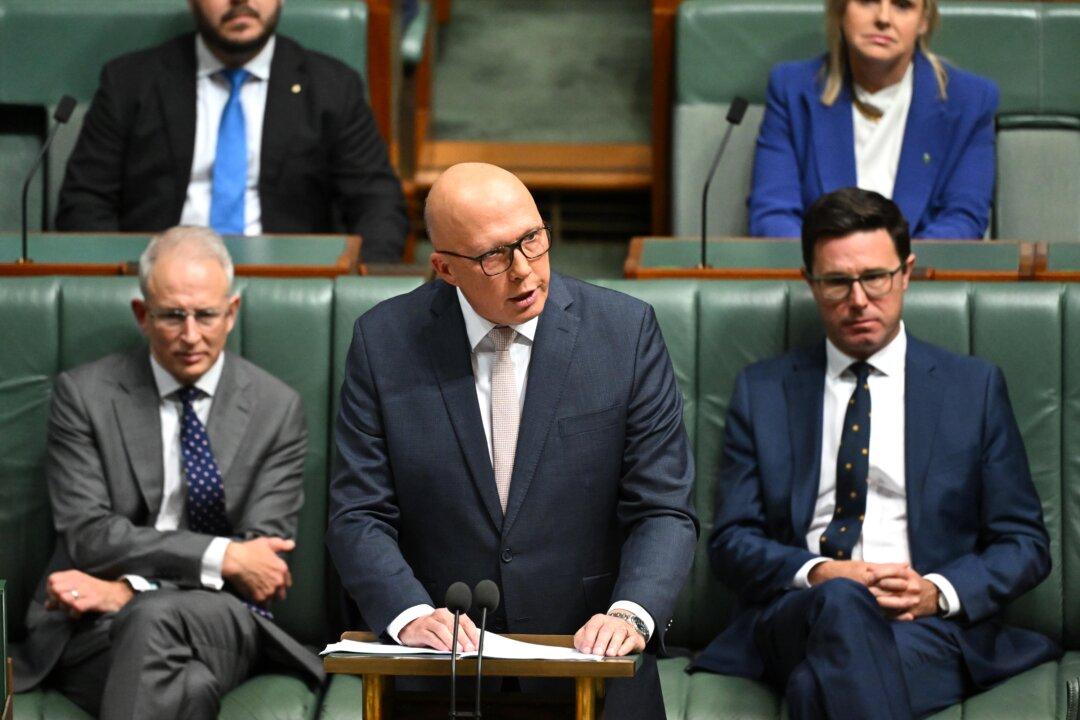Central banks around the world have done a lot of damage in recent years trying to avoid recessions instead of their real job of keeping inflation under control.
Rather than something to be feared and avoided, recessions are an unavoidable and necessary part of any economy.
In fact, we get recessions in various industries all the time, and what shows up in GDP data as a recession is actually one where more industries are retreating than advancing.
Anyone my age was raised by parents who had either first or second-hand experience of The Great Depression. This was a period of severe economic downturn that, in the case of the United States, lasted until the end of World War II.
In Australia, unemployment rates rose to 30 percent and GDP declined by roughly 24 percent over a period between 1930 and 1933.
That time certainly shaped my parents’ habits. Financial conservatism was matched by habits of frugality, like always turning the lights off when you left a room.
That shaped a period when personal and business finances were more robust than usual because of the dire experience of when they were not.
In my early years, I suffered a number of downturns—although nothing like the 1930s.
The closest was the recession of 1982, billed the “worst recession since the Great Depression,” but with an overall contraction of only 5.1 percent.
There was a negative quarter at the end of 1965 caused by drought (I actually remember a front-page image of a parched and cracked dam with the remains of a dead sheep rather than the financial stress).
Then there was the recession in 1974 caused by the Arab oil shock, followed by the one in 1977.

There was the December quarter of 1981 through to the March quarter of 1983, partly caused by a drought, but also a collapse in mining revenues coupled with wage rises caused by deregulation and pattern bargaining.
Recessions Are Normal
There was a variety of reasons for these recessions and downturns, but really only one underlying cause.Economies are stochastic, and while they tend to equilibrium, this involves overshooting and undershooting their optimal capacity.
Too much overshooting will bring at least an equal and opposite reaction as the ability of the economy to meet all demands is put under too much stress.
The Great Depression was caused by easy money that led to a stock market boom and then a bust as central bankers raised interest rates and banks failed.
The stock market bust was also probably partly a case of crowd psychology as new buyers dried up at the prices being asked, and then a fear of loss drove prices down as investors panicked and tried to exit the market all at the same time.
Measures taken to fix the situation, such as erecting tariff barriers, actually made things worse. And then there was the redirection of valuable government resources into wealth-destroying, make-work projects to keep men in work—they were unemployed as a result of government policies in the first place.
So in their desire to avoid a recession, bankers and governments made it worse.

This generation of central bankers isn’t driven so much by the Great Depression as by the inflation shocks of the 70s. In Australia, these shocks were driven by circumstances and politicians who had learned the wrong lessons from the Great Depression.
What our current crop of central bankers has learned is that you want to avoid bank failures at all costs and that asset price inflation is better than asset price deflation.
Neither of these is correct.
Banks that can’t fail take unacceptable lending risks, and assets that escalate in price indefinitely reduce real returns, encourage unwarranted speculation, and exclude a lot of new entrants (first home buyers, for example).
They also wrongly think that turnover in the economy equals growth, and for a moment, were seduced by Modern Monetary Theory (MMT) into thinking they could permit governments to borrow without limits.
Why Recessions Are Good for the Economy
There are a number of reasons why recessions are necessary and beneficial, although painful at the time.Without downturns, too many inefficient companies survive—we need what Schumpeter called “creative destruction”, where companies, or sometimes whole industries, are replaced by competitors.
Recessions test how strong your structure is. Are you overborrowed? Do you have regular, reliable, and predictable cashflows? Do you have flexible employment systems? Have you hired the best managers and professionals?
They teach investors and lenders to be realistic. They also test the real need for your products.
In a recession, unemployment rises, and wages stagnate or decrease. Consumers become more conscious of cost or value, which then transfers to you directly if you are a retailer and then all the way up the chain.
Recessions allow better companies to expand and use resources more efficiently, increasing productivity, or they give space to novel competitors who have found better ways of providing products and services, again raising productivity.
Without a recession, market power tends to get concentrated in established firms, making them complacent and lazy and often providing them with political power to make it difficult for competitors to penetrate their markets.
The pattern of bad behaviour by governments in an effort to avoid recession was set after the global financial crisis.
In Australia, we aggressively cut interest rates and spent government money on public works.
The interest rate cuts sparked an increase in housing prices which barred many young Australians from the market because they couldn’t afford a deposit. The spending was financed by government borrowing, which has ultimately fed into increased inflation.

The spending arrived too late to have an impact on the actual recession itself, thus proving that the economy was actually resilient enough to self-correct without government help.
We have repeated that pattern every time since at the hint of any problem, leading to the absurdity of our response to COVID where we shut down much of the economy for 12 or more months, and borrowed more than the federal budget to keep things running as though everything was normal.
That, combined with the energy transition, expansive MMT-fuelled infrastructure construction, and record levels of immigration, is what has caused our current inflation problems. And the Reserve Bank of Australia has now hiked interest rates by four percent, which might tip us into the recession they have tried to avoid for 15 years.
But things are worse than that. Depressing interest rates to 0.15 percent meant that the price of money was much lower than it should have been.
Long-term returns on cash have historically been in the four to six percent range. This is a reasonable price.
Savers are owed a suitable return on their funds. This is actually a factor, via discount rates, in the assessment of which projects are viable enough to proceed.
Lower the cash rate and pay savers too little, and you encourage risky borrowing in low-return projects that cannot pay back their capital value over any reasonable period of time.
So by trying to avoid a recession, we’ve made things worse. We’ve lowered the growth potential of the economy at the same time as, making it more vulnerable to shocks.
The longer we go on like this, the greater the potential for another Depression to arrive. That’s the kind of recession you don’t need to have.





